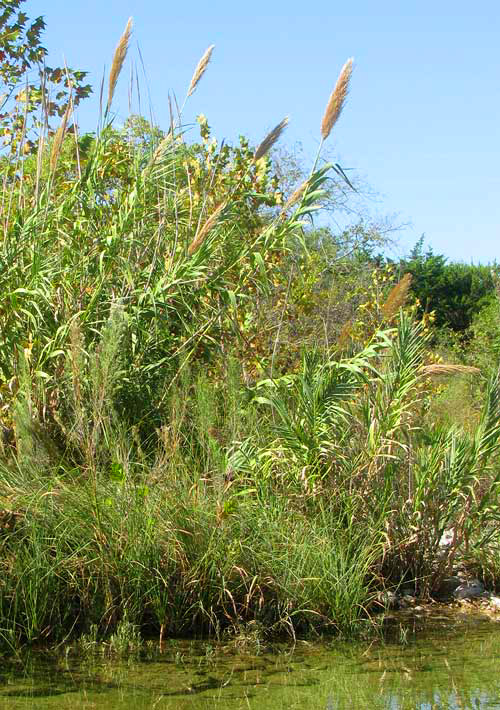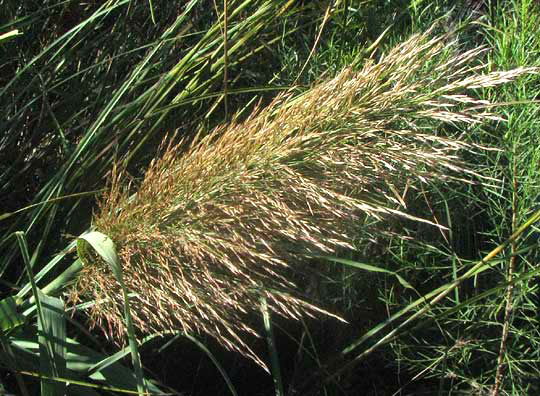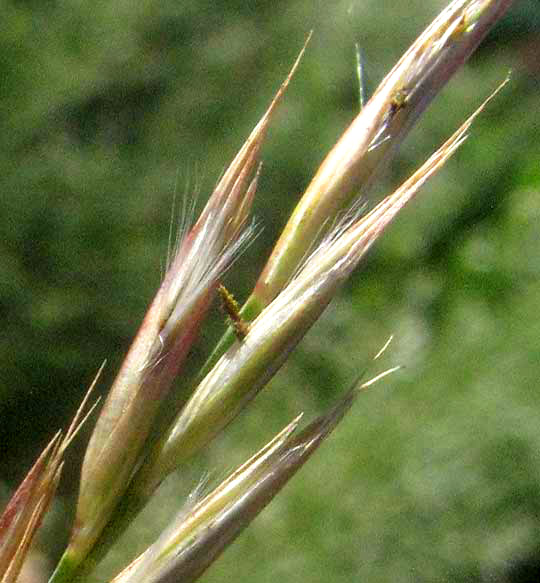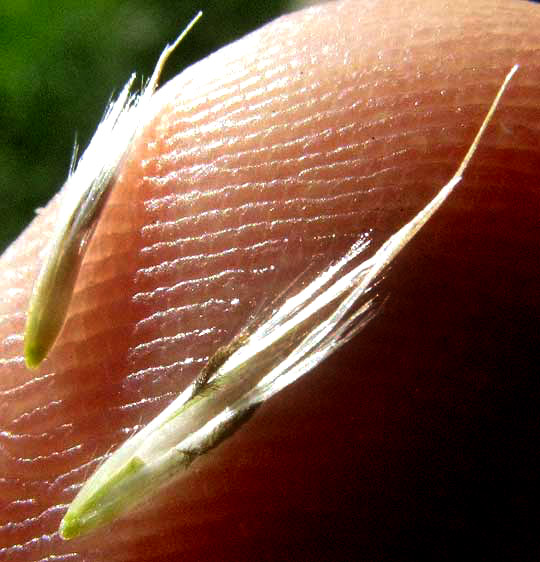Excerpts from Jim Conrad's
Naturalist Newsletter
from the October 27, 2013 Newsletter issued from the Frio Canyon Nature Education Center in the valley of the Dry Frio River in northern Uvalde County, southwestern Texas, on the southern border of the Edwards Plateau; elevation ~1750m (~5750 ft); N29.62°, W99.86°; USA
GIANT REED
A few miles south of Juniper House, where the road dips into the little Dry Frio River and crosses atop a low culvert, a marshy area forms upstream of the road. At the water's edge there's a small colony of flowering, very tall grasses -- about 15 ft high (4.5m) -- with large leaves arrayed on opposite sides of the stems, like barbs from the shaft of a flat feather, as shown below:

The two-ft-long (60cm), panicle-type inflorescences consist of hundreds of spikelets, shown below:

Looking at an individual spikelet up close you see that its lowest scales, its glumes, are longer than the florets inside them, which is a little unusual, as seen below:

Usually each spikelet contains four or five florets, and a scale, the lemma, below each floret bears a needle-like "awn" at its tip.

If you break open a spikelet, shown above, what you find is a little confusing because the florets don't seem fully formed. Even mature ones produce no well developed grains. That's because this impressive, pretty species is an invasive from eastern and southern Asia, and probably parts of Africa and the southern Arabian Peninsula, and in the US it does not produce viable grains.
The big grass is Giant Reed, ARUNDO DONAX, and in the US and much of the world it's been widely planted, often forming dense stands on disturbed sites, sand dunes, in wetlands and along streams. It sprouts from very large, deep rhizomes. In years past the state of Texas planted it for erosion control, but now in some places it's being removed as an invasive pest. For example, in Austin, the state capital, Giant Reed covers five miles of shoreline along Lady Bird Lake, mainly between the water and bike and hiking trails. A three-year program using herbicides is being undertaken to get rid of it.
Giant Reed is the "reed" of the Bible, and for 5,000 years has been used to make the vibrating reeds that give clarinets, organs, and other pipe instruments their voice. Its stems are so strong that they've been used for walking sticks and fishing rods, and they contain fiber from which paper and rayon can be made. I'd always thought that rayon was a fiber synthetically made from petroleum products, but in fact it's cellulose that's been dissolved and regenerated, then forced through spinnerets to produce filaments. With cotton fibers rising in price, there's talk of growing Giant Reed for its cellulose for producing rayon fibers to replace cotton in many fibers.
Studies in the European Union have identified Giant Reed as the most productive and lowest impacting of all energy biomass crops, and its inability to spread by seeds is just an added attraction for this use.